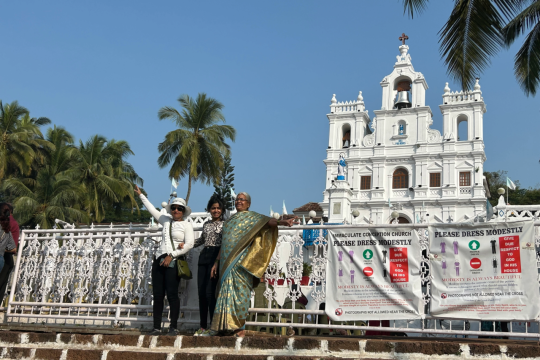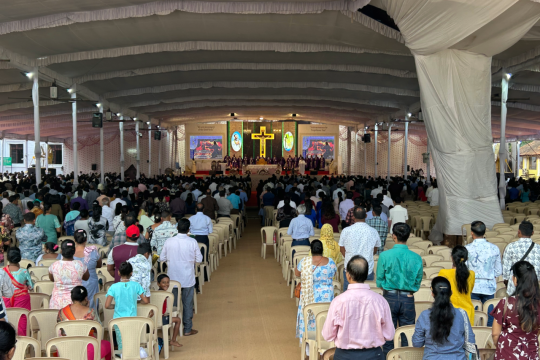The distinctive culture of Goa, a small state on the West Coast of India, is the legacy of local Konkan traditions reshaped during 450 years of Portuguese colonial rule. Portugese rule in Goa was the longest era of colonial rule in all of India. For centuries, Goa was the headquarters for Portuguese Catholic missionary activities throughout Asia, earning it the moniker “the Rome of the East.” Portugal’s influence on Catholicism in India is evident along the Coromandel and Malabar coasts, in Kerala and Tamil Nadu, but Portugal’s influence in Goa was particularly long and all-encompassing.
Goa’s Portuguese heritage and lavish colonial-era churches still lead many people to think of it as the most Catholic place in India, which it once was, but multi-religious Goa is not the most heavily Christian or Catholic state in the country.1 In the mid-19th century, almost two-thirds of Goa’s population was Catholic, but due to emigration within India and abroad, the proportion of Catholics has declined steadily ever since.2 According to the most recent census, Goa is 25% Christian (the census does not differentiate among churches), 66% Hindu, and 8% Muslim.3 South Goa is just over 36% Christian, and North Goa is just over 16% Christian.4
The native language of Goa is Konkani. The Portuguese language, which dominated during the colonial era (1510-1961), has been displaced by English as a lingua franca.
Goa’s Portuguese heritage still makes it a culturally unique place. Indians from Goa and elsewhere consistently assert that “you can just tell” right away that someone is Goan—by the way they dress, their food, and their more “liberal” attitudes. Goan interviewees also suggested that religious harmony is stronger here than in many other states in India.5 Portuguese last names–Fernandes, Borges, DeSouza, DeMelo, and the like–and European Christian first names remain the norm among Catholics here.
Explore other Indian states and churches.
- 1The northeast states of Manipur, Meghalaya, Mizoram and Nagaland are proportionately much more Christian. Much more populous states like Kerala and Tamil Nadu are home to much larger Catholic communities in absolute terms, though Catholics represent a smaller percentage of the population in each state. “India’s most populous states and territories have large Hindu majorities, while Muslims and Christians form majorities in some smaller states,” Religious Demography of Indian States and Territories, Pew Research Center, published August 26, 2021.
- 2For a study on the Goan diaspora on several continents, see Margret Frenz, Community, Memory, and Migration in a Globalizing World: The Goan Experience, c. 1890-1980 (Oxford University Press, 2014). Children and grandchildren of people born in Goa before 1961 are entitled to Portuguese citizenship, a factor that makes it easier to emigrate with an EU passport.
- 3Alexander Henn, Hindu-Catholic Encounters in Goa: Religion, Colonialism, and Modernity (Indiana University Press, 2014), 62. “Statistical Hand Book Of Goa 2021-22,” Government Of Goa, Publication Division, Directorate of Planning, Statistics and Evaluation, Porvorim-Goa, published 2023, 17.
- 4“North Goa District Religion Data - Hindu/Muslim,” North Goa Religion Census 2011, Population Census, published 2025. “South Goa District Population, Caste, Religion Data (Goa) - Census 2011,” South Goa district, Census India, accessed 2025.
- 5Firsthand references in this article are based on participation at the exposition of St. Francis Xavier from December 6-10, 2024, including formal and informal interviews with dozens of pilgrims and with other Goans in Panaji and surrounding villages, all in the traditionally more Christian core area known as the “Old Conquests,” supplemented by published sources as noted. On the particularly Luso-Indian character of Goa, see Mathew N. Schmalz, “A Special Place: Imagining Goa from the Estado da India to Indian Independence,” in Religion and Politics in a Global Society: Comparative Perspectives from The Portuguese-Speaking World, ed. Paul Christopher Manuel, Alynna Lyon and Clyde Wilcox (Lexington, 2013), 163-184.


